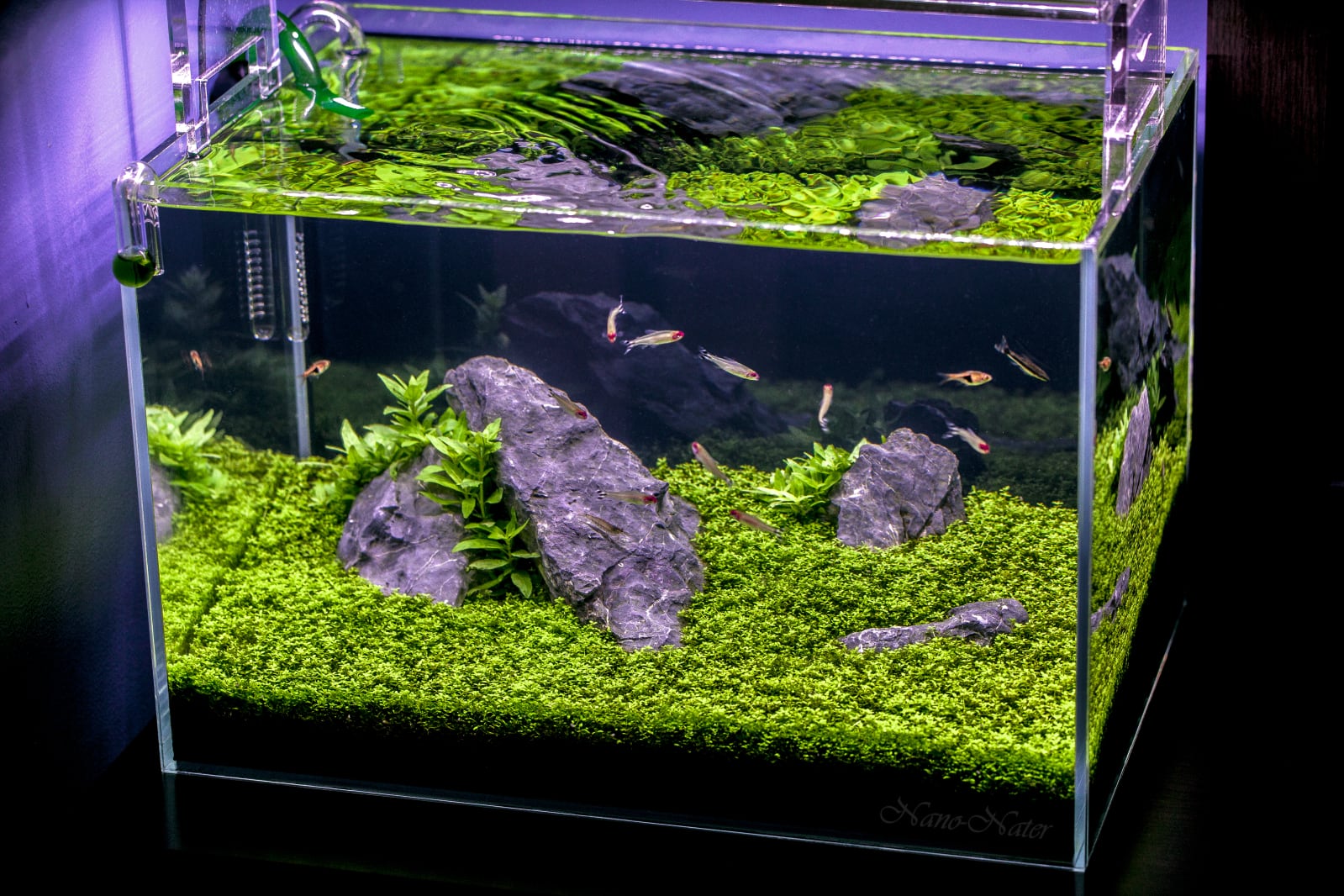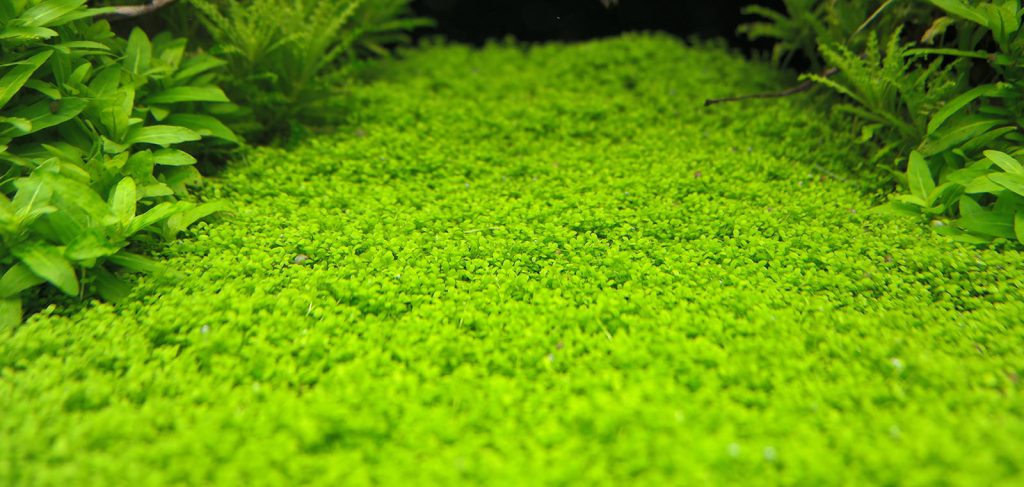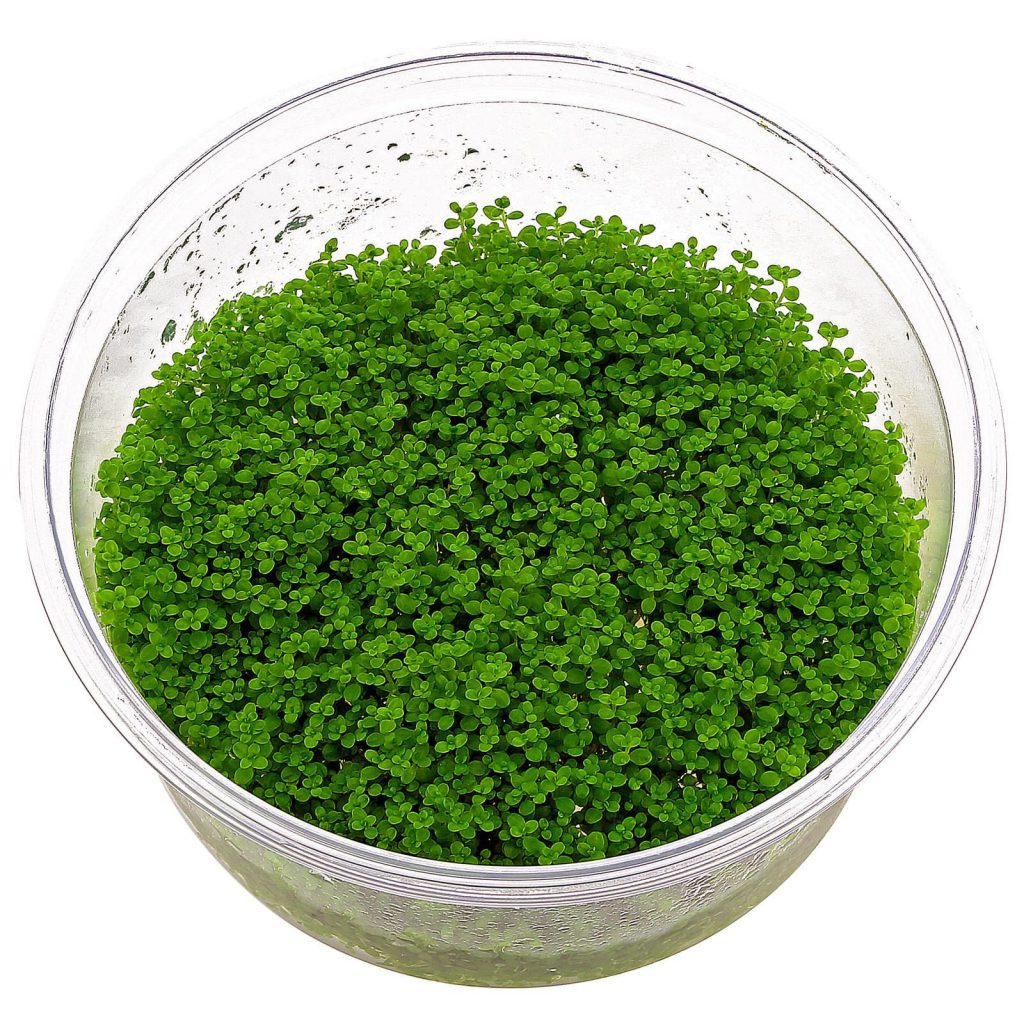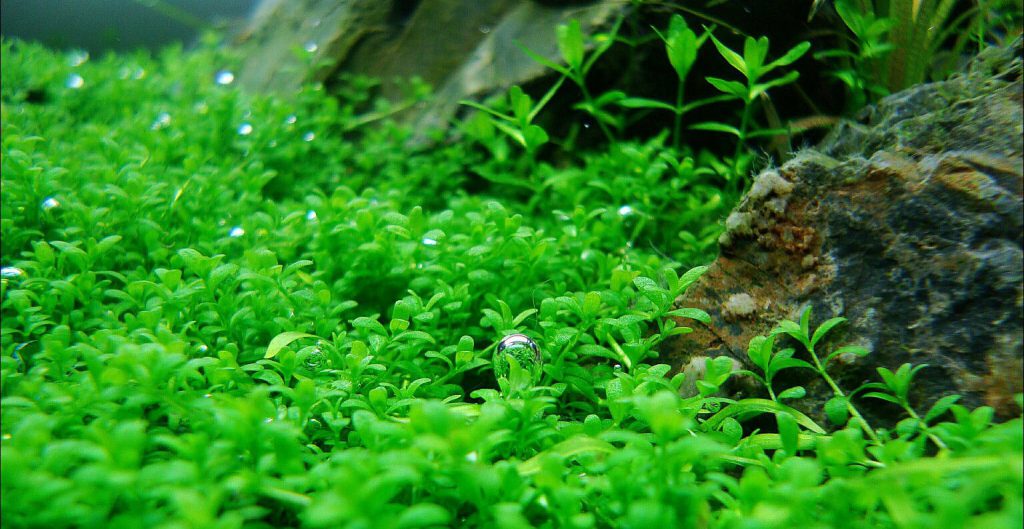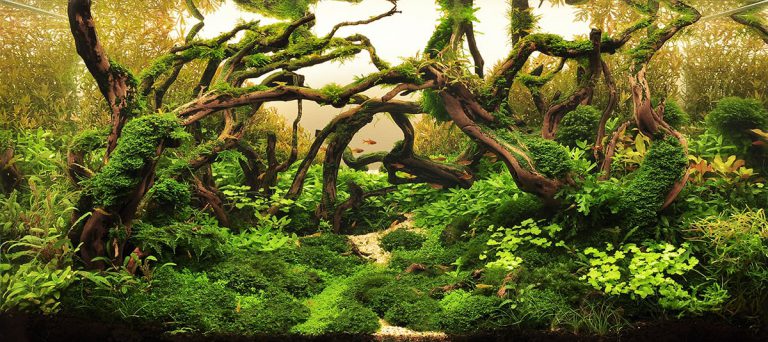Hemianthus Callitrichoides (commonly known as HC Cuba) is both a popular and versatile Aquarium Plant that produces a lush green aquarium carpet effect. It can be used to create a rich base that can contrast against other focal point Aquarium Plants.
However the HC Cuba Aquatic Plant is very often referred to as a rather problematic plant, with many aquascapers struggling to cultivate it.
Here we cover all that there is to know about the HC Cuba plant, describing in what setups can be used most effectively and finally we answer that all important question of how you can successfully cultivate it.
The HC Cuba Aquarium Plant – A Quick Overview
Vital Statistics
Here is HC Cuba’s spec sheet:
- Size: Up to three centimetres tall and spreads up to 10 centimetres horizontally.
- Ideal environment: Nano to middle sized aquariums
- Scientific Name: Hemianthus callitrichoides
- Common Name: Hemianthus callitrichoides Cuba
- Difficulty: Medium to Advanced
- CO2 Requirements: High
- Lighting Requirements: High
- Plant Arrangement: Foreground
- Growth Rate: Moderate
- Family: Scrophulariaceae
- Genus: Hemianthus
- Origin: North America (Cuba)
- Plant Type: Stem
- Height: 3 – 5+ cm
- Water Hardness: Soft (GH = 4-8 dH)
Discovered by Tropica founder Holger Windelov, during an expedition to a remote rocky Cuban stream in 2003, today the HC Cuba Aquatic Plant continues to grow in popularity, with more and more aquascapers making the HC Cuba plant the foreground plant of choice. This appreciation has led to the plant becoming relatively widely available.
Suitable Underwater Garden Designs
Because of the small scale of this aquarium plant (standing at just 3-5cm tall and 10cm across) the HC Cuba makes for the perfect plant in nano aquariums, or within any type of layout where you need to achieve an idea of scale. It can create some particularly effective designs when used in an aquarium that is to house small fish and/or shrimp and produces a steady pearling as it photosynthesizes.
The HC Cuba can also produce wonderful results when used within a traditional Iwagumi layout (e.g. a layout where stones serve as both the focal point and only hardscape); find out more about Iwagumi Layouts in our introductory guide.
How to Grow the HC Cuba Aquarium Plant
The HC Cuba is frequently thought of as a difficult aquarium plant to cultivate, a high amount of attention must be given to light and CO2 levels, as well as the use of high quality fertilizers can see you growing a wonderful, lush carpet for your aquarium that grows moderately quickly.
Whilst easily manageable you also must ensure that the levels of light, CO2 and fertilizers are maintained in order to see your HC Cuba truly flourish.
How to Plant the HC Cuba Aquatic Plant
Light Levels: T5s with reflectors (or equivalent).
Planting Conditions: Moist substrate (no aquarium water added).
Key element: Substantial levels of nutrients, particularly CO2 and nitrogen.
You have two options for planting the HC Cuba plant. The first (and easiest) option is to separate the plant and Rockwool from their pots and split the plants/Rockwool into 1cm/0.4” square portions and plant them (including the Rockwool) into the Aquarium’s substrate. You should then start to see the HC Cuba carpeting the bed after a week or so.
For those who may fall under the more frugal collection of aquascapers, there is a cheaper, although more painstaking process. This involves simply picking the individual stems with tweezers and planting them into the substrate with relatively large spaces between one another.
Once planting is complete fill the tank gradually (filling the tank too fast can result in the plant floating).
Choice of Substrate: Aqua Soil Powder
Aqua Soil Powder may be the most suitable form of substrates as it invariably has a much smaller grain size than other forms. This then makes the planting process far easier, as well as allowing for the HC Cuba’s roots to take more quickly.
On an aesthetic note however, and where the HC Cuba is used to create scale, Aqua Soil Powder complements the effect of the plant in creating a carpet that will contrast against the size of your plants or other, larger elements within your aquarium. This is most successfully achieved when used in the foreground.
Maintaining the HC Cuba Aquatic Plant
In order to maintain the HC Cuba, and avoid the plant becoming too long, you need to frequently trim the plant with, advisably, wave scissors. If you’re trying to achieve a particularly dense effect then trimming it more frequently will help you achieve this in a shorter period of time.
Dense growth, in turn, produces both a healthy looking carpet that appears brighter than if the HC Cuba were thinner.
The Hemianthus Callitrichoides: A Case Study
As we’ve already explained, the HC Cuba Plant is incredibly well suited when in use as a carpeting plant. However, in one particularly creative example we see just how versatile the HC Cuba is when used in a very different way.
Nature’s Chaos (created by James Findley) features the plant on drift wood that contributes towards the aquarium’s dramatic feel. To achieve this James simply pushed the HC Cuba into the driftwood, where it quite obviously flourished.
‘Hemianthus callitrichoides ‘Cuba’ growing in pockets at the top of the hardscape is meant to “re-create hanging vines and jungle like growth on mountain tops”. ‘Cuba’ is a high light plant, and the top of this aquarium is the ideal location for it; close to the 600 watts of light that is responsible for its dense growth.’
James Findley
In Summary
The Hemianthus Callitrichoides Aquarium plant has seen unprecedented interest and use within the layouts of many aquariums, which is particularly impressive given the relatively short period since its discovery.
And whilst this plant has gained a rather infamous reputation as the ‘Aquascaper’s Challenge’, following the instructions within this article should see you achieving fantastic results with one of the most versatile plants found in the Aquascaping world.
We’d love to see your successes with creating a beautiful underwater garden from the HC Cuba plant so feel free to send over some photos to showcase your creation; similarly however, if you’ve not gotten on so well, then why not send your photos anyway?
The HC Cuba Plant is a notoriously particular plant that requires a balanced combination of elements, so don’t feel disheartened. In any instance we love helping our readers in solving Aquascaping challenges!
Aquascaping Love was created to blog about, document and educate people in the art of Aquascaping. We created this website to showcase some of the most beautiful underwater gardens from around the world, providing helpful hints, tips and tutorials for others to recreate some of the most inspirational underwater gardens in existence.
Enjoyed this article? Spread the word by sharing it with your friends!

